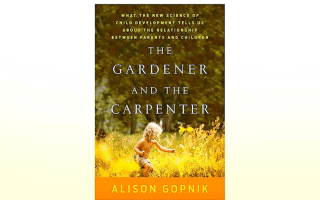Playing is often undervalued and misunderstood. We commonly hear things like, “Of course, preschoolers like school. All they do is play.” However, this sentiment trivializes play and categorizes it as a childish activity that should discontinue as kids age. On the other hand, play-based preschools declare “play is a child’s work,” making playing an essential job. As a parent, it’s hard to make sense of these two opposing beliefs. It’s true. All kids want to play and have fun, but how is playing helping them learn? Why is it likened to work? And more importantly, why is play vital to life?
What is play?
Surprisingly, what constitutes play varies from expert to expert. However, most agree that play needs to be dictated by the child. This means they decide if their play has structure or not, and they choose the parameters. To this end, playing doesn’t include team sports, music lessons, dance class, adult-directed crafts, video games or physical education at school. It does include lots of free time without constant adult supervision and judgment.
Early childhood educator Lisa Murphy shares an enlightening observation in her book Lisa Murphy on Play: The Foundation of Children’s Learning. “There is quite a bit of milling around. There is much emphasis on the gathering of things and, oftentimes, long periods of time talking about the ‘rules’ of the game.” Meanwhile grown-ups are “anxiously waiting for the play to start…anxious for the roads to be built, the block tower to be created, and the tea party to begin get frustrated because they have forgotten that play is a process, not just an outcome” (1).
There is also a universal definition
According to Stuart Brown, author of Play: How it Shapes the Brain, Opens the Imagination, and Invigorates the Soul, “play is a state of mind, rather than an activity.” This state of mind is achieved by doing an activity that’s absorbing, seemingly purposeless and enjoyable. It can suspend time and feelings of self-consciousness. “It is also self-motivating and makes you want to do it again” (2). A very similar concept is what positive psychologist Dr. Mihaly Csikszentmihalyi calls “flow,” which he’s linked to happiness. On the surface, these two concepts may seem at odds with one key point, which we’ll explore further below. However, a comparison helps us uncover some universal truths.
Brown’s “play” happens during downtime because it should be “purposeless,” and according to Csikszentmihalyi, “flow” rarely happens during leisurely pursuits. “The best moments in our lives are not the passive, receptive, relaxing times…the best moments usually occur if a person’s body or mind is stretched to its limits in a voluntary effort to accomplish something difficult and worthwhile.” During moments of flow, time passes unnoticed, and the judgments of the outside world become irrelevant. However, it’s notable that, like Brown, Csikszentmihalyi considers wanting to repeat the experience a necessary condition of achieving flow. Furthermore, Brown acknowledges that play is possible at work depending on how you view your work. And Csikszentmihalyi states that flow can happen while pursuing a hobby, depending on how challenging your hobby is. So the closer you look at the two concepts, the more similar they appear.
A look at our brains
In his book, Brown cites the work of Nobel Laureate and neural scientist Dr. Gerald Edelman. Brown explains how his own observations aptly align with Edelman’s theory on how “new information is functionally integrated into the brain” (2). According to Edelman, our perceptual experiences are coded in our brains in scattered “maps” or networks of interconnected neurons. For example, the various shapes and sizes of trees “are encoded into a common map that encodes what ‘treeness’ is” (2). This map allows us to recognize a tree even if we’ve never encountered that particular species. Our perceptual generalizations emerging from these maps are malleable—they flex and change with new experiences. And they “have emotional connotations” (2). Also, we use these organically changing maps to navigate our way through life.
What this means in early childhood
When children play, they are adding to an ever-changing and growing framework of “mapped connections.” In pretend play, children create different narratives, try out various characters, test out numerous scenarios, and imagine possibilities. Brown calls pretend play “a rich stew of mixed perceptions”. These play perceptions combine with their experiences as they test things out and figure out what actually is. In this way, children form neural connections that help them understand more of the world as more connections get made. This way of building neural connections also applies to other types of play.
As Murphy observes, “play is a very intellectual activity overflowing with opportunities for problem solving and creativity” (1). When children play with blocks, they learn about balance through stacking. They learn estimating as they figure out the number of blocks needed to complete their castle. And they figure out shapes as they decide which blocks they need for their structures. When their towers fall, they learn about gravity. Then, when they have to keep rebuilding to get the exact form they want, they acquire patience. Playing with blocks appears insignificant. But during play, children actively explore math concepts while building mapped connections for math.
Do adults need play too?
For many adults, play is what children do. Even if they buy into play-based preschools for their kids, most don’t see it as a necessity for themselves. However, playing also benefits adults, and it should continue throughout our lives. It’s no coincidence that when anthropologist Dr. George Murdock went looking for cultural elements shared by all societies, he found joking to be a cultural universal. Telling jokes is a safe means of releasing social tensions. It is also a form of adult play. Although it is no longer called “play.” This is where the concepts of play and flow intersect.
When Csikszentmihalyi set out to find the key to happiness, he discovered that happiness levels could increase by introducing flow. He argued that the manifestation of happiness took effort. Remember, one of the central tenets of flow was that it requires skill and effort. When children become absorbed in their play, they are experiencing flow. During these times, they are stretching their skill sets. It takes great effort and concentration. When adults flow, they do the same. However, it looks different because adults are working with more accomplished skills.
Academic learning is still learning, isn’t it?
We forget that when it comes to experiences, young kids are starting with a blank slate. Murphy puts it this way, “Children need experiences to attach words to” (1). Play supplies rich experiences that flashcards, computer apps, crafty time-fillers and worksheets lack. What they see and hear needs to be anchored to their experiences to create meaningful mapped networks. Play combines input and real-life experiences in a fun, engaging way that makes kids want to repeat the experience. Academics does an excellent job of delivering the input. However, without a foundation of experiences, the connections that get formed lack significance. They need rich sensory experiences to connect the information to life, emotions and the physical environment. This is why academic learning is helpful for older kids and adults, but not preschoolers.
Final thoughts on play
Whether it’s called play, flow or joking, these experiences are universal for all societies and ages because they make life worth living. They allow us a risk-free way to learn, stretch and imagine. They challenge us to become more skilled and creative while fulfilling our need to find joy. Perhaps play is not as vital to life as it is necessary for the vitality of life.
Read more posts about Child Development where we share the latest research to help you meet your child at each age and stage.
Publications
(1) Murphy, Lisa. Lisa Murphy on Play. Redleaf Press, 2016.
(2) Brown, Stuart L., and Christopher C. Vaughan. Play. Avery Publishing Group, 2010.








